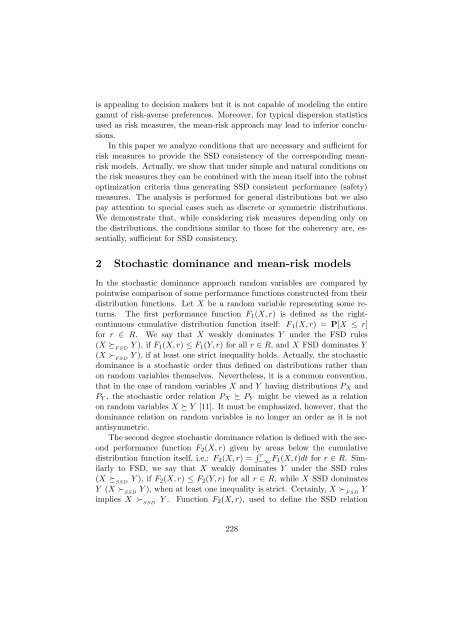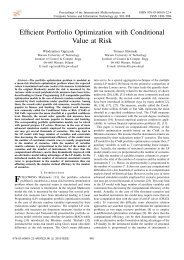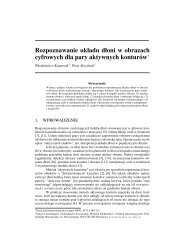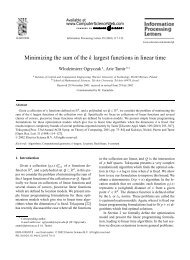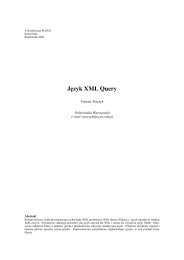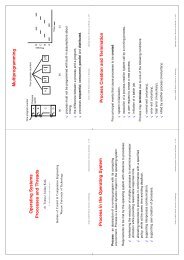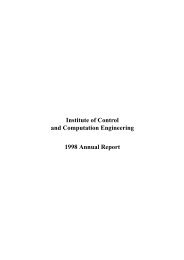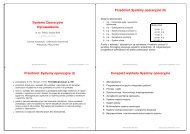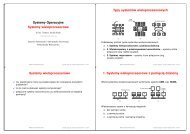SSD CONSISTENT CRITERIA AND COHERENT RISK MEASURES
SSD CONSISTENT CRITERIA AND COHERENT RISK MEASURES
SSD CONSISTENT CRITERIA AND COHERENT RISK MEASURES
Create successful ePaper yourself
Turn your PDF publications into a flip-book with our unique Google optimized e-Paper software.
is appealing to decision makers but it is not capable of modeling the entire<br />
gamut of risk-averse preferences. Moreover, for typical dispersion statistics<br />
used as risk measures, the mean-risk approach may lead to inferior conclusions.<br />
In this paper we analyze conditions that are necessary and sufficient for<br />
risk measures to provide the <strong>SSD</strong> consistency of the corresponding meanrisk<br />
models. Actually, we show that under simple and natural conditions on<br />
the risk measures they can be combined with the mean itself into the robust<br />
optimization criteria thus generating <strong>SSD</strong> consistent performance (safety)<br />
measures. The analysis is performed for general distributions but we also<br />
pay attention to special cases such as discrete or symmetric distributions.<br />
We demonstrate that, while considering risk measures depending only on<br />
the distributions, the conditions similar to those for the coherency are, essentially,<br />
sufficient for <strong>SSD</strong> consistency.<br />
2 Stochastic dominance and mean-risk models<br />
In the stochastic dominance approach random variables are compared by<br />
pointwise comparison of some performance functions constructed from their<br />
distribution functions. Let X be a random variable representing some returns.<br />
The first performance function F 1 (X, r) is defined as the rightcontinuous<br />
cumulative distribution function itself: F 1 (X, r) = P[X ≤ r]<br />
for r ∈ R. We say that X weakly dominates Y under the FSD rules<br />
(X ≽ F SD<br />
Y ), if F 1 (X, r) ≤ F 1 (Y, r) for all r ∈ R, and X FSD dominates Y<br />
(X ≻ F SD<br />
Y ), if at least one strict inequality holds. Actually, the stochastic<br />
dominance is a stochastic order thus defined on distributions rather than<br />
on random variables themselves. Nevertheless, it is a common convention,<br />
that in the case of random variables X and Y having distributions P X and<br />
P Y , the stochastic order relation P X ≽ P Y might be viewed as a relation<br />
on random variables X ≽ Y [11]. It must be emphasized, however, that the<br />
dominance relation on random variables is no longer an order as it is not<br />
antisymmetric.<br />
The second degree stochastic dominance relation is defined with the second<br />
performance function F 2 (X, r) given by areas below the cumulative<br />
distribution function itself, i.e.: F 2 (X, r) = ∫ r<br />
−∞ F 1(X, t)dt for r ∈ R. Similarly<br />
to FSD, we say that X weakly dominates Y under the <strong>SSD</strong> rules<br />
(X ≽ <strong>SSD</strong><br />
Y ), if F 2 (X, r) ≤ F 2 (Y, r) for all r ∈ R, while X <strong>SSD</strong> dominates<br />
Y (X ≻ <strong>SSD</strong><br />
Y ), when at least one inequality is strict. Certainly, X ≻ F SD<br />
Y<br />
implies X ≻ <strong>SSD</strong><br />
Y . Function F 2 (X, r), used to define the <strong>SSD</strong> relation<br />
228


